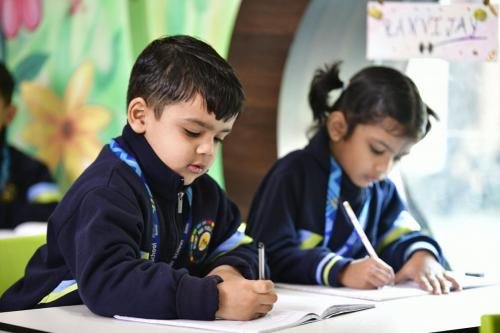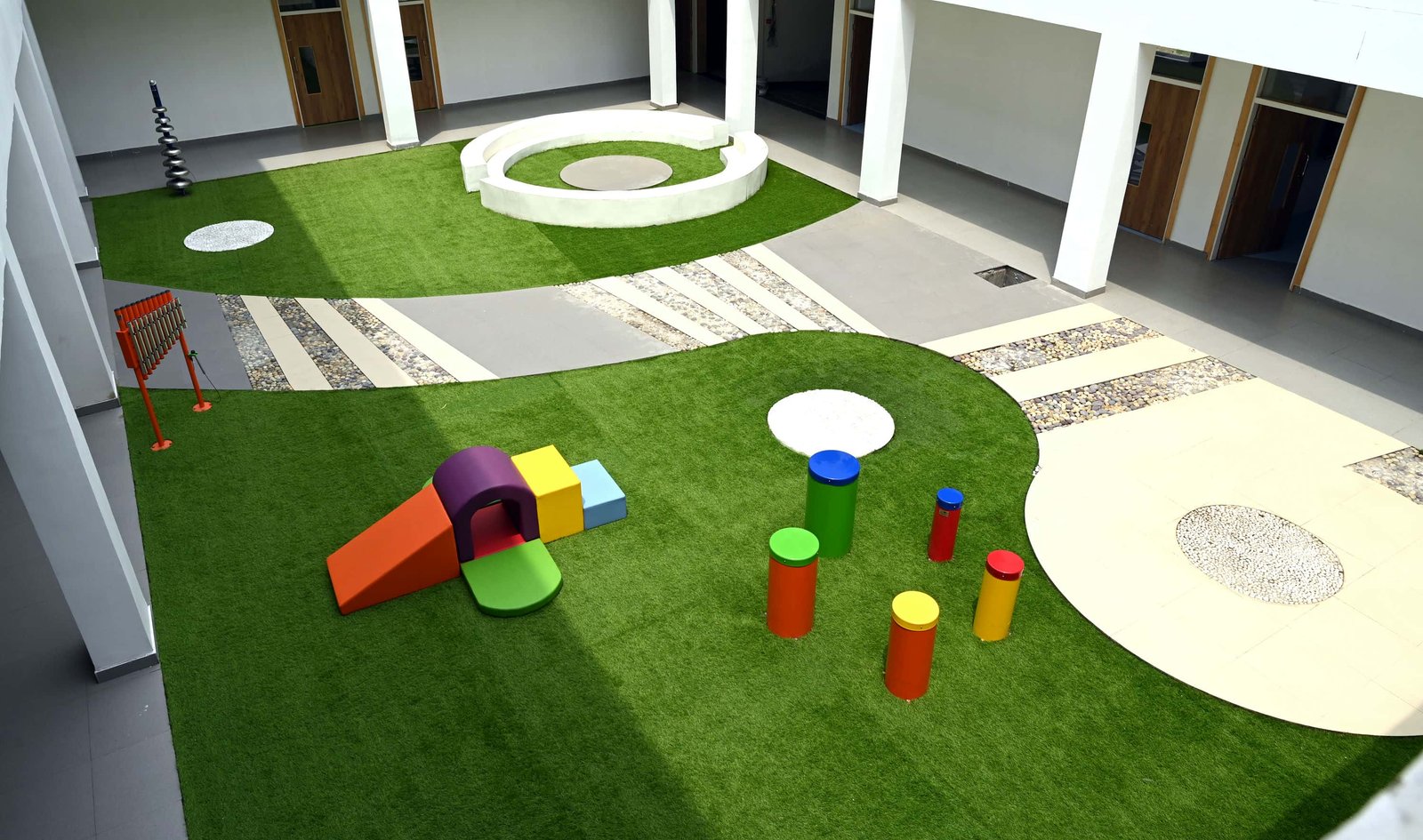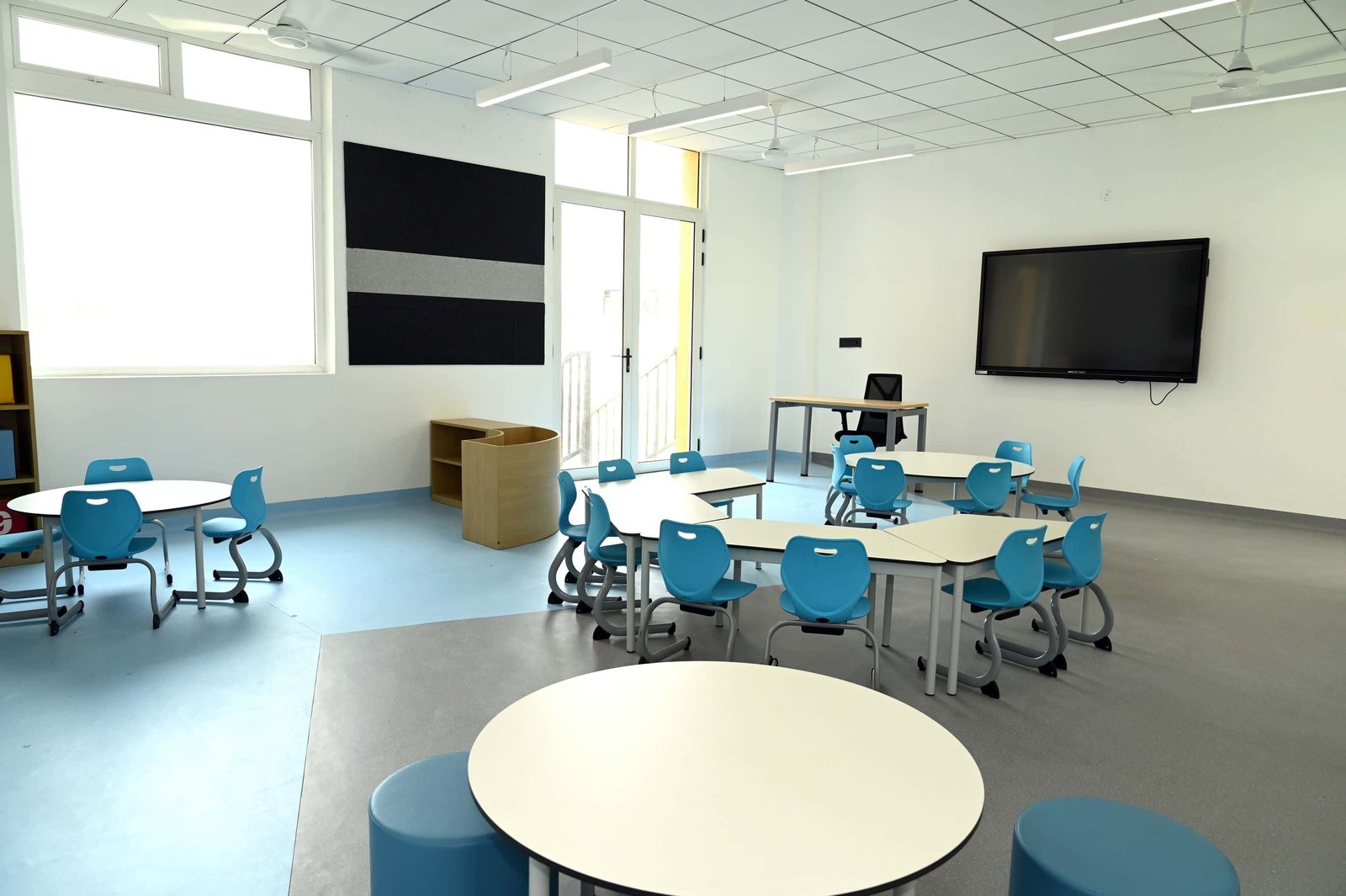


Science behind our Design : Beyond being Traditional
The infrastructural design of Mount Abu School Panipat is based on a scientific approach to create an environment that supports pedagogy.
Design for our Early Years
We believe that play is a crucial motivation when children first start school, and a creative and imaginative physical space will motivate younger learners and enable new kinds of interactions. Our learning spaces allow each learner to access a variety of learning environments and situations which engage both the mind and the body. Our furniture layouts are designed in such a way that learners get ample space to play, communicate, collaborate and interact. Our learning spaces are far away from being traditional classrooms.
- For practicising presentation skills
- A sheltered space for concentration
- A place for informal learning with peer-engagement
- A design principle that recognises the value of sensory learning experiences through exploring or inquiry
- Physical activities that enhance cognitive skills
Our layout ensures ample spaces for following features:

Our outdoor learning approaches open up a new realm of possibilities, so it is important to break down the boundaries between interior and exterior environments. Our interior learning spaces are connected to the outdoor areas, so our learners have a choice to go outside.
Design for our Primary School
Learning a social progress that allows our learners to share, discuss, observe and copy methods to try on their own. Our physical
design of our spaces enable our learners to get together, so they can communicate, engage and learn with and from each other.
There is more to our classroom than a traditional square box. Our spaces enable specialist learning, project-based learning, formal
learning, outdoor play & learning, social interactions and technology-aided learning.
Design for Outdoor Spaces
At Mount Abu School Panipat, open spaces play a crucial role in supporting nature-based and experiential
learning. These spaces provide opportunities for students to explore and interact with their natural surroundings, fostering a deep
connection with the environment. The school's design incorporates landscaped gardens, outdoor classrooms, and sports fields, providing
ample space for students to engage in various outdoor activities.
Nature-based learning is supported by the school's focus on sustainability and conservation. The school has implemented rainwater
harvesting, solar energy, and waste management systems, providing opportunities for students to learn about sustainable living practices.
The open spaces also serve as a platform for experiential learning, where students can actively engage in activities such as gardening,
animal care, and outdoor sports.

The school's open spaces not only provide opportunities for hands-on learning but also help in the holistic development of students. Spending time outdoors has been linked to improved physical and mental health, creativity, and problem-solving skills.

Acoustic-Treated Spaces
The acoustic treated ceilings by Ecophon in our classrooms are a prime example of this. These ceilings are designed to absorb sound and provide optimal acoustic conditions in the classroom. This helps learners and educators to better understand and communicate with each other, leading to improved learning outcomes. Our school's design is focused on creating a comfortable and conducive environment for learning, where students can focus on their studies without any distractions.
.png)
.png)





